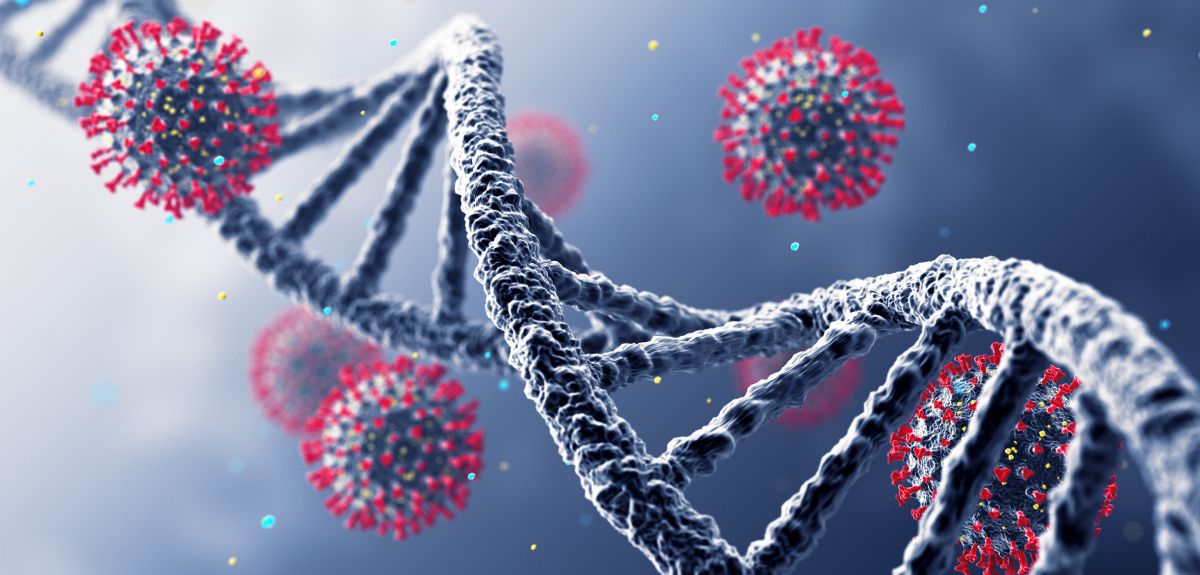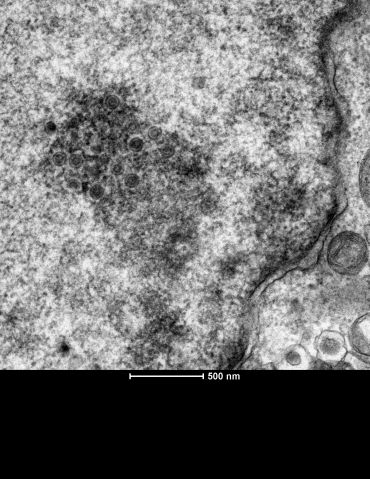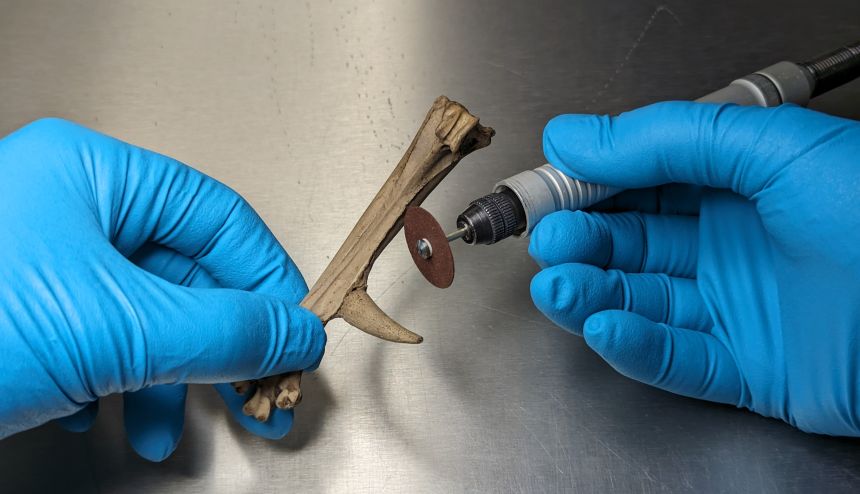
Ancient DNA reveals how a chicken virus evolved to become more deadly
An international team of scientists led by geneticists and disease biologists from the University of Oxford and LMU Munich have used ancient DNA to trace the evolution of Marek's Disease Virus (MDV). This global pathogen causes fatal infections in unvaccinated chickens and costs the poultry industry over $1 billion per year. The findings, published today in the journal Science, show how viruses evolve to become more virulent and could lead to the development of better ways to treat viral infections.
 Electron Microscopy image of Marek’s disease virus particles replicating in the nucleus of an infected cell. Credit: The Bioimaging group, Pirbright Institute.
Electron Microscopy image of Marek’s disease virus particles replicating in the nucleus of an infected cell. Credit: The Bioimaging group, Pirbright Institute.Based on the ancient genetic sequences, they were also able to resurrect ancient biological processes using cellular assays, demonstrating that ancient strains were significantly milder than their modern counterparts.
This breakthrough not only sheds light on the evolutionary history of MDV, but also holds promise for the development of more effective therapies against this devastating poultry disease.
This new study is based on DNA isolated from chicken bones that were excavated from 140 archaeological sites in Europe and the Near East. These ancient genomes revealed that MDV was widespread in European chickens at least 1,000 years before the disease was first described in 1907. This highlights the importance of preserving archaeological remains, especially given their power to reveal valuable insights into the evolution of virulence.
When first described, this disease only led to mild symptoms in older chickens. As chicken consumption dramatically increased in the 1950s and 1960s, MDV has continued to evolve and has become increasingly aggressive despite the development of several vaccines.
When first described, this disease only led to mild symptoms in older chickens. As chicken consumption dramatically increased in the 1950s and 1960s, MDV has continued to evolve and has become increasingly aggressive despite the development of several vaccines.
First author Dr Steven Fiddaman (Department of Biology, University of Oxford)
Professor Greger Larson (School of Archaeology, University of Oxford) co-senior author commented: 'We have seen how mitigating diseases often creates a selection pressure that increases the virulence of the virus. Being able to watch this process take place by sequencing ancient virus genomes shows just how dramatically the virulence of MDV has increased in the past century.'
Professor Adrian Smith (Department of Biology, University of Oxford), co-senior author said: 'Ancient DNA has provided us with a unique perspective on the emergence of MDV as a deadly chicken virus and may teach us lessons that are applicable to the control of other viral infections of medical and veterinary importance.'
The study Ancient chicken remains reveal the origins of virulence in Marek’s disease virus has been published in Science.
 One of the ancient chicken bones used in the study. Credit: Olaf Thalmann.
One of the ancient chicken bones used in the study. Credit: Olaf Thalmann.
 Landmark study definitively shows that conservation actions are effective at halting and reversing biodiversity loss
Landmark study definitively shows that conservation actions are effective at halting and reversing biodiversity loss
 Researchers find oldest undisputed evidence of Earth’s magnetic field
Researchers find oldest undisputed evidence of Earth’s magnetic field
 Honorary degree recipients for 2024 announced
Honorary degree recipients for 2024 announced
 Vice-Chancellor's innovative cross-curricular programme celebrated
Vice-Chancellor's innovative cross-curricular programme celebrated
 New database sheds light on violence in Greek detention facilities
New database sheds light on violence in Greek detention facilities
 New AI tool could help predict viral outbreaks
New AI tool could help predict viral outbreaks
 Viruses shown to evolve as a result of different immune responses in different ethnic populations
Viruses shown to evolve as a result of different immune responses in different ethnic populations
 New research explains how rabbits adapted to survive myxomatosis
New research explains how rabbits adapted to survive myxomatosis